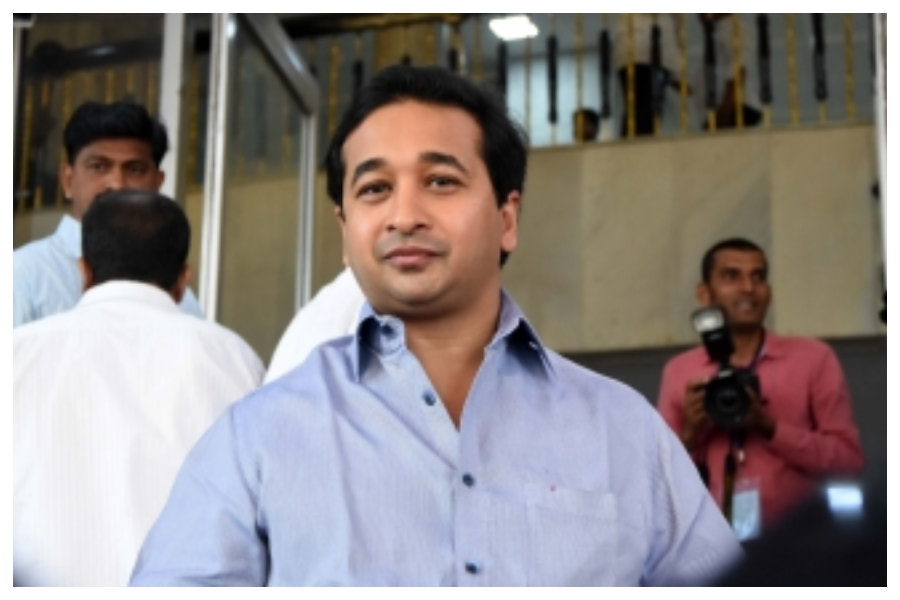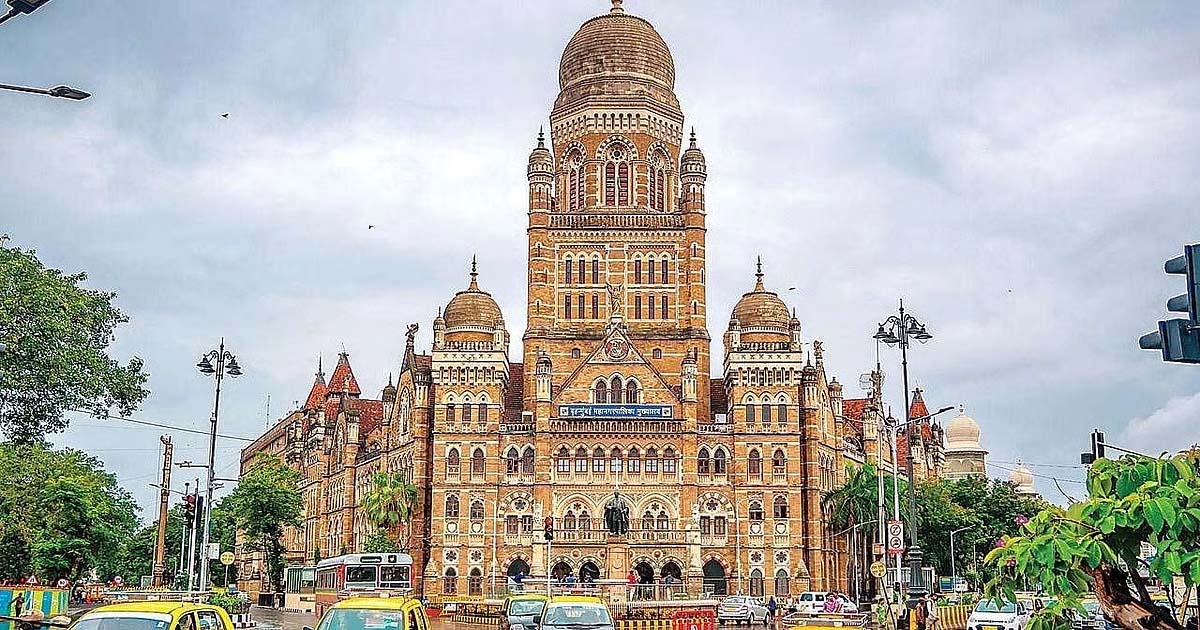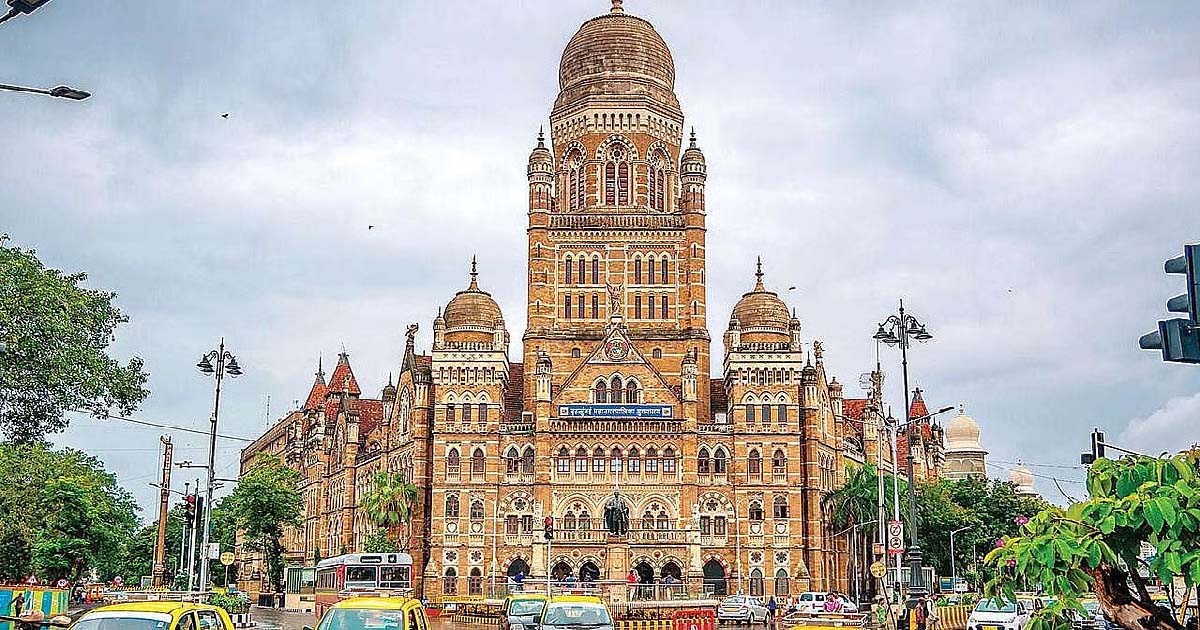Maharashtra
BJP MLA Nitesh Rane asks Maharashtra CM details on ‘monsoon readiness’ plans for Mumbai

Bharatiya Janata Party MLA Nitesh Rane on Monday raised the issue of water-logging that plagues Mumbai during the monsoon and sought to know the monsoon preparedness made by the state government and BrihanMumbai Municipal Corporation.
In a letter to Chief Minister Uddhav Thackeray, Nitesh Rane, the son of Union MSME Minister Narayan Rane, alleged that every year, the BMC makes claims of taking remedial measures, but nothing happens in the field.
As a result, many areas in the city are flooded and there are reports of people losing their loved ones due to water-logging, he said in his letter, sent ahead of the upcoming BMC elections.
“Shiv Sena, ruling the BMC for more than two decades now has no solution to offer to Mumbaikars who suffer from water-logging in the city during monsoons every year. You want to change the face of Mumbai by painting and beautification, but you ignore the main issues completely. This time, a good monsoon is forecast so one can imagine what is in store for Mumaikars,” said Nitesh Rane.
He brought to the notice of the CM about 386 ‘danger spots’ in Mumbai which are tagged as flooding-prone, of which the sites fall in south central Mumbai’s Matunga, Wadala, and Sion which create havoc if there is continuous rainfall.
Nitesh Rane said that on an average there are 22 days when Mumbai will experience high tides in the Arabian Sea, and if it simultaneously rains heavily on those days, then the city could face havoc equivalent to the great floods of July 26, 2005 that submerged the country’s commercial capital.
“Besides installing pumps at these flood-prone spots, what else have you done to provide relief to Mumbaikars,” questioned the BJP MLA from Kankavli in Sindhudurg district.
He demanded from Thackeray whether the state and BMC have made any advance preparations to resolve these recurring issues and give permanent solutions, or would Mumbaikars have to again suffer and bear floods.
Meanwhile, a senior civic official said that all pre-monsoon works are proceeding at high speed since April and most of it is near completion, though certain chronic or low-lying areas continue to be at risk of water-logging or floods as in the past.
“Besides, in the past few years, the flooding problem is more noticeable owing to the ongoing work of Mumbai Metro lines at various locations, the upcoming Coastal Road Project in south Mumbai, and certain other road projects, but we are taking full counter-measures,” said the officer, declining to be identified.
Maharashtra
Mumbai Municipal Corporation 10,231 polling stations, BMC administration fully prepared for the election phase

Mumbai: The Mumbai Municipal Corporation administration has made complete preparations for the Mumbai BMC general elections 2025-26. The municipal corporation and the election administration have planned meticulously so that every voter can easily exercise their right to vote in this important exercise of democracy. A total of 1 crore 3 lakh 44 thousand 315 voters will exercise their right to vote in this election. A total of 10 thousand 231 polling stations have been identified for them at various locations. This includes schools, colleges, government/semi-government buildings, cooperative housing societies as well as private buildings. Municipal Commissioner and District Election Officer Bhushan Gagrani said that the polling stations have been planned keeping in mind the population, number of voters and geographical conditions in each ward.
Municipal Commissioner Gagrani said that in connection with the general elections to the Mumbai Municipal Corporation, the final list of 227 ward-wise polling stations prepared by the Election Department of the Municipal Corporation in compliance with the rules and regulations of the State Election Commission has been published. The final list of polling stations has been prepared to provide easy and secure voting facilities to the voters while maintaining transparency in the election process as per the instructions of the State Election Commission. To avoid any problem or inconvenience on the polling day, voters should make sure in advance which is their respective polling station. The ward-wise final list of polling stations has been published with the aim of providing ease, transparency and convenience to the voters in the voting process.
A total of 10,231 polling stations have been identified for the voters in the jurisdiction of the Mumbai Municipal Corporation, as per the 24 administrative division offices in seven wards and 23 central polling stations. Special facilities will be provided for the disabled, senior citizens and women to avoid any inconvenience during the voting process. Facilities like power supply, drinking water, toilets, ramps etc. have been provided at the polling stations. These have been inspected and verified by the Returning Officer. ‘Voter Assistance Centres’ will be set up near the polling stations to help voters find their names. Information boards have been directed to be installed at the polling stations. Gagrani said that overall, extensive and planned arrangements have been made for polling stations at different locations and in different types of places to ensure a smooth, safe and easy voting process. A total of 10,231 polling stations will be set up in different types of buildings and locations, keeping in mind the past schedule of polling stations. Out of which 4,386 polling stations are being set up in government/semi-government buildings. Out of these, 2,387 polling stations will be in closed areas, 880 polling stations in semi-closed areas and 1,119 polling stations in open areas.
In addition, a total of 702 polling stations have been arranged in cooperative housing societies. Out of these, 181 polling stations will be in closed areas, 312 polling stations in semi-closed areas and 209 polling stations in open areas. In addition, a total of 5,143 polling stations will be set up in private buildings. Out of these, 2,710 polling stations will be in closed areas, 1,378 polling stations in semi-closed areas and 1,055 polling stations in open areas.
Maharashtra
BMC Elections 2026: Nomination Forms Of Candidates Across Parties Rejected After Scrutiny Ahead Of Mumbai Civic Body Polls

Mumbai: Scrutiny of nomination papers for the Brihanmumbai Municipal Corporation (BMC) elections has led to the rejection of several candidates across parties due to incomplete documents, errors in forms and failure to submit mandatory certificates, election officials have said.
A total of 2,516 nomination papers were filed till December 30, the final day. As the forms were examined on Wednesday, those of candidates from the Congress, BJP, AAP, NCP (SP), Bahujan Samaj Party (BSP) and several independents were rejected.
As most parties finalised seat-sharing arrangements and issued ‘A’ and ‘B’ forms (key documents to file nominations) only in the last two to three days to prevent rebellion, a rush of nominations was witnessed on December 29 and 30.
Officials said delays in finalising candidatures, last-minute documentation, non-submission of caste validity certificates and incomplete details were among the reasons behind the rejections.
Officials said candidates whose nominations were rejected would not be able to contest the elections. They added that the final electoral picture would become clearer after the completion of all statutory procedures related to the scrutiny process.
According to official data, the highest number of rejected nominations belonged to independent candidates, though major parties were also affected.
In the case of NCP (SP), the nomination filed by its candidate Bharat Danani from ward 109 was rejected during scrutiny.
One BSP candidate’s nomination was rejected in F-South ward (wards 200 to 206) as the proposer appeared twice on the form.
The nomination of Congress candidate Manoj Kanojiya from ward 226 could not be accepted as his caste certificate was not submitted, said officials. AAP candidate Navnath Lalge, who had filed his nomination from ward 226, also suffered a setback on the same ground.
Both BJP candidates from wards 211 and 212 saw their nominations rejected due to incomplete documents and other deficiencies, said officials.
In ward 109, six nominations that were rejected belonged to independents. All 12 nominations rejected in G-South wards (193 to 199) were independents, while several others were rejected in T division (wards 103 to 108), L ward (wards 163, 171 and 175) and other areas.
In ward 226, five nominations were filed. While the Congress and AAP candidates were disqualified for not submitting caste certificates, the nominations of BJP candidate Makarand Narvekar and two independents were found valid.
There are 227 electoral wards in BMC. The metropolis has 1,03,44,315 voters, including 55,16,707 male and 48,26,509 female voters. The number of “Other” voters is 1,099, according to officials.
In the last civic polls in 2017, the undivided Shiv Sena had won 84 seats. Of these winners, 46 have now switched to Deputy Chief Minister Eknath Shinde-led Shiv Sena. As many as 16 former corporators from other parties, including the Congress, NCP and SP, have also joined the Shiv Sena.
The BJP had won 82 seats last time. In the past eight years, six former corporators from other parties have joined it.
In 2017, the Congress had bagged 31 seats, followed by NCP (9), MNS (7), SP (6), AIMIM (2) and six others.
Elections to 29 municipal corporations, including the BMC, will be held on January 15, and votes will be counted the next day. The nomination process began on December 23 and ended on December 30, while January 2 is the last date for withdrawal of nominations. The final list of candidates will be published on January 3.
Maharashtra
BMC Elections 2026: 2,516 Nominations Filed For 227 Seats Ahead Of Mumbai Civic Polls

Mumbai: A total of 2,516 nominations has been submitted for the 2026 BMC elections by the all the aspirants, including all political parties and independent candidates. There are 227 seats in the BMC. Out of the total, 2,122 were submitted on Wednesday, December 30, the last day of submitting the nominations papers and affidavits.
The election department has appointed 23 Returning Officers (RO) across Mumbai’s 26 administrative wards. As per the data the state election commission, total 11,392 forms were distributed by the ROs, of which 2,516 were submitted.
See the below chart for number of nominations at each RO office with wards list.
The the ROs office which got highest number of candidates nomination for the BMC elections include: M East ward RO with 182 nominations, M East+M West wards with 164 nominations, A+B+C wards with 150 nominations, G North with 137, K West with 133, H East and S ward with 125 each and N ward with 123.
The lowest number of candidate nomination has been submitted for R Central with 51, C+D wards with 58 and R North ward with 60 nominations.
Today (Thursday, December 31) the BMC election department will scrutinize the nomination submissions and the list will be declared as soon as the process is complete. If any forms are found with improper documentations, affidavits, they will be rejected on technical grounds.
The last day of nomination withdrawal is January 2, and the final candidates list with symbol will be declared on January 3.
All the political parties which saw defections, discontent among its workers for denial of ticket or loss of seat under seat sharing formulas, have time till January 2 to tackle the rebellion in their ranks.
Party wise nominations and seat sharing
In the sharing formula, the BJP will contest on 137 seats and Shiv Sena (Shinde) on 90.
The Congress released a list of a total of 143 candidates, and VBA 62. The Congress-VBA alliance will give the remaining seats to smaller alliance parties like the Rashtriya Samaj Party.
The Shiv Sena (UBT) and MNS alliance has announced a list of 135 and 53 candidates, respectively, till the last reports.
The NCP (Ajit Pawar) announced its third and final list of 30 candidates on Tuesday, taking the total fielded in Mumbai to 94. Notably, 52 women candidates (referred to by the party as ‘Ladki Bahin;) will contest the elections, as the NCP prepares to enter the fray with full strength and capacity. The number of candidates fielded by Ajit Pawar-led NCP is more than Shinde Sena.
Meanwhile, the Sharad Pawar-led NCP announced its second list of four candidates, with the party fielding candidates on 11 seats in Mumbai.
-

 Crime3 years ago
Crime3 years agoClass 10 student jumps to death in Jaipur
-

 Maharashtra1 year ago
Maharashtra1 year agoMumbai Local Train Update: Central Railway’s New Timetable Comes Into Effect; Check Full List Of Revised Timings & Stations
-

 Maharashtra1 year ago
Maharashtra1 year agoMumbai To Go Toll-Free Tonight! Maharashtra Govt Announces Complete Toll Waiver For Light Motor Vehicles At All 5 Entry Points Of City
-

 Maharashtra1 year ago
Maharashtra1 year agoFalse photo of Imtiaz Jaleel’s rally, exposing the fooling conspiracy
-

 National News1 year ago
National News1 year agoMinistry of Railways rolls out Special Drive 4.0 with focus on digitisation, cleanliness, inclusiveness and grievance redressal
-

 Maharashtra1 year ago
Maharashtra1 year agoMaharashtra Elections 2024: Mumbai Metro & BEST Services Extended Till Midnight On Voting Day
-

 National News1 year ago
National News1 year agoJ&K: 4 Jawans Killed, 28 Injured After Bus Carrying BSF Personnel For Poll Duty Falls Into Gorge In Budgam; Terrifying Visuals Surface
-

 Crime1 year ago
Crime1 year agoBaba Siddique Murder: Mumbai Police Unable To Get Lawrence Bishnoi Custody Due To Home Ministry Order, Says Report
















